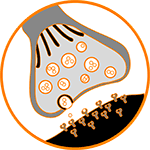Neural Plasticity
 Neural Plasticity
Neural Plasticity
Neuroscientists use the term "neural plasticity" (or just "plasticity") to describe the modifiable nature of our brains. The term refers to the range of ways in which our brains can be changed by our environments and our behaviors.
Neural plasticity is most abundant when we are infants—after all, an infant's brain has yet to experience the world and so it must adapt to the world it encounters. For infants and toddlers, key physical aspects of the brain will develop, or not develop, based on the interactions the infant has with the environment.
As adults, our brains loose certain types of plasticity available to infants, toddlers, and very young children. Fortunately, we still maintain sufficient neural plasticity to continue modifying our brains throughout our lives.
 As adults, neural plasticity typically refers to the way in which neurons in our brain
continually modify both the degree and range of connections that they have with other
neurons in the brain. When we learn, we may enrich connections; forgetting may represent
lost or re-arranged neural connectivity. In fact, the most recent research suggests
that, beyond changes in the neurons themselves, a large group other cells in our brains—astrocytes, which are a type of glial cells—also contribute to neural plasticity.
As adults, neural plasticity typically refers to the way in which neurons in our brain
continually modify both the degree and range of connections that they have with other
neurons in the brain. When we learn, we may enrich connections; forgetting may represent
lost or re-arranged neural connectivity. In fact, the most recent research suggests
that, beyond changes in the neurons themselves, a large group other cells in our brains—astrocytes, which are a type of glial cells—also contribute to neural plasticity.
Enhancing neural plasticity was at the heart of Dr. Dale Bredesen's 2014 research demonstrating that mind-brain-body health programs could reverse abnormal memory loss associated with aging.
